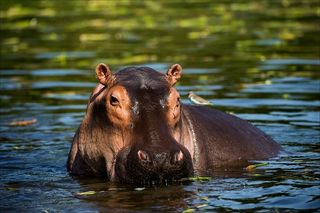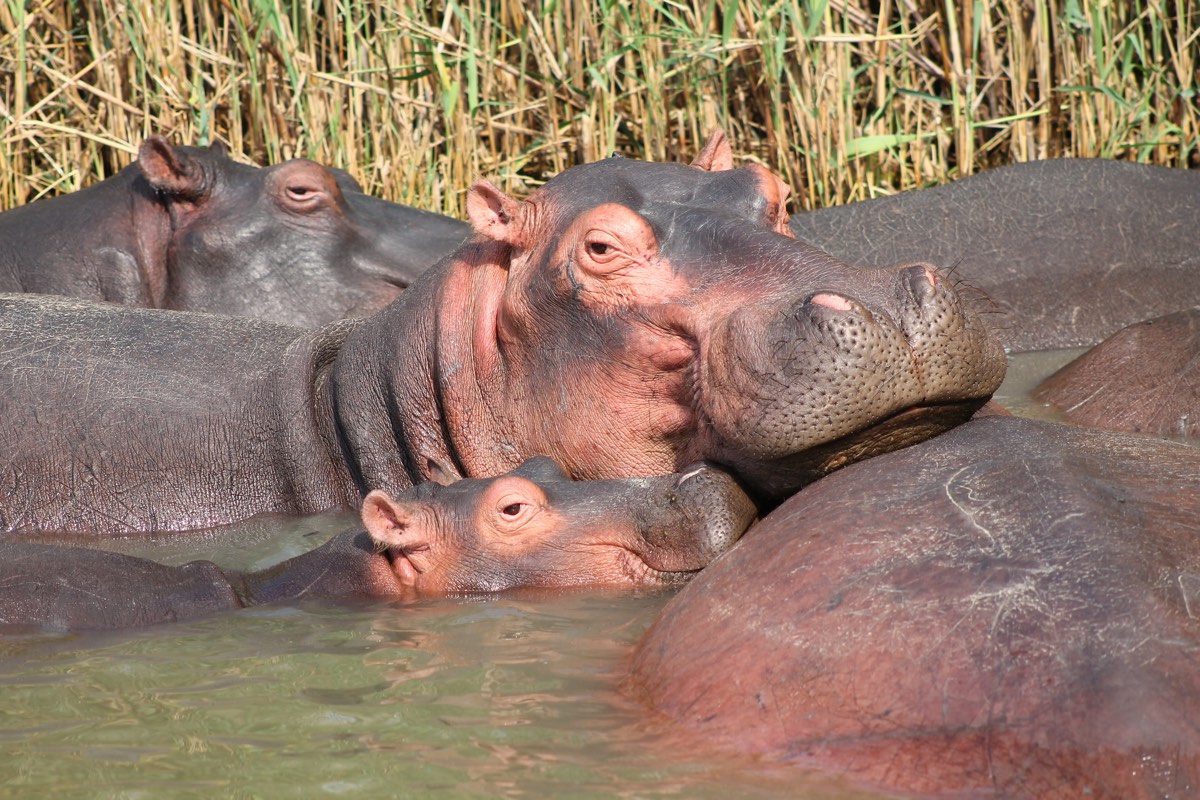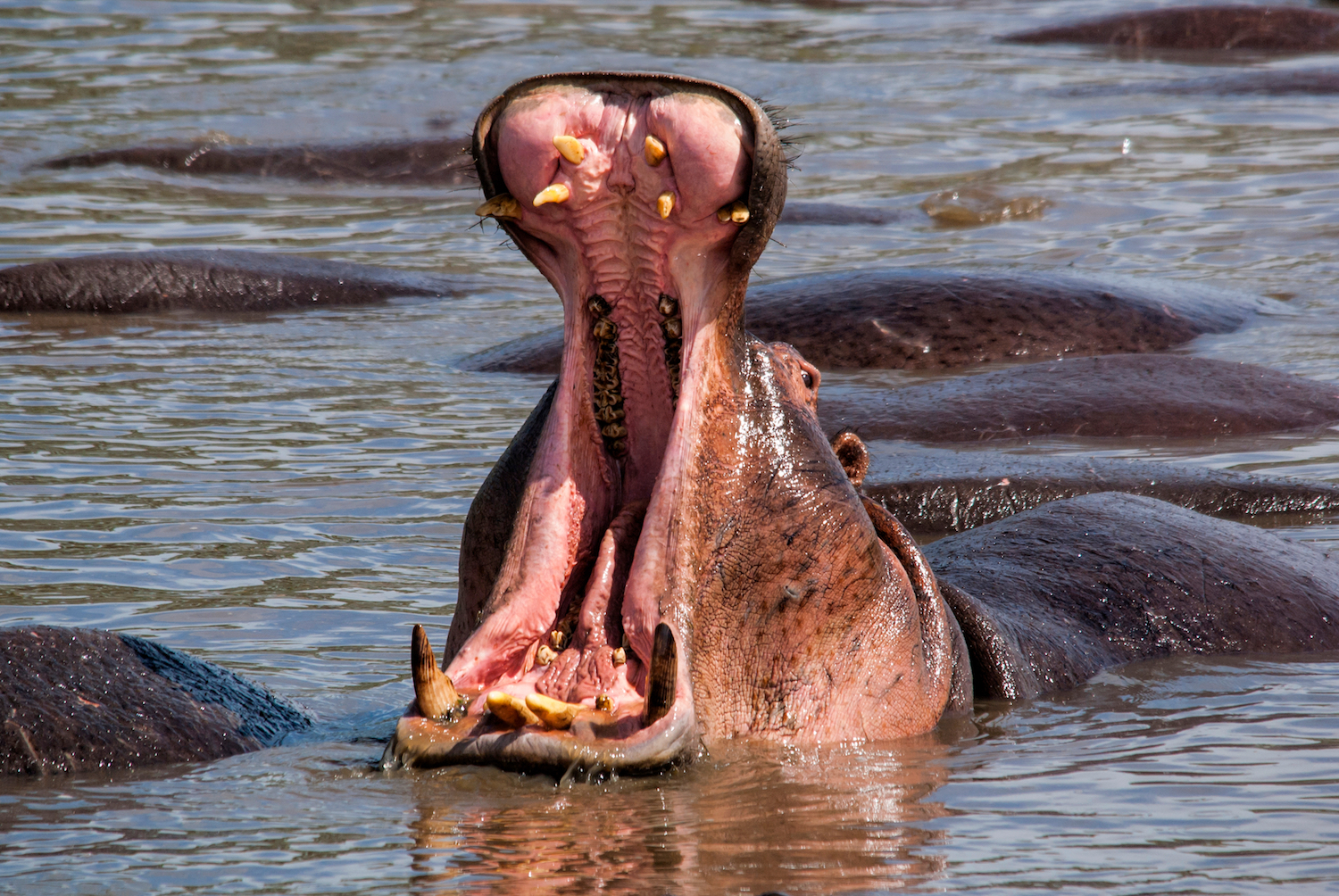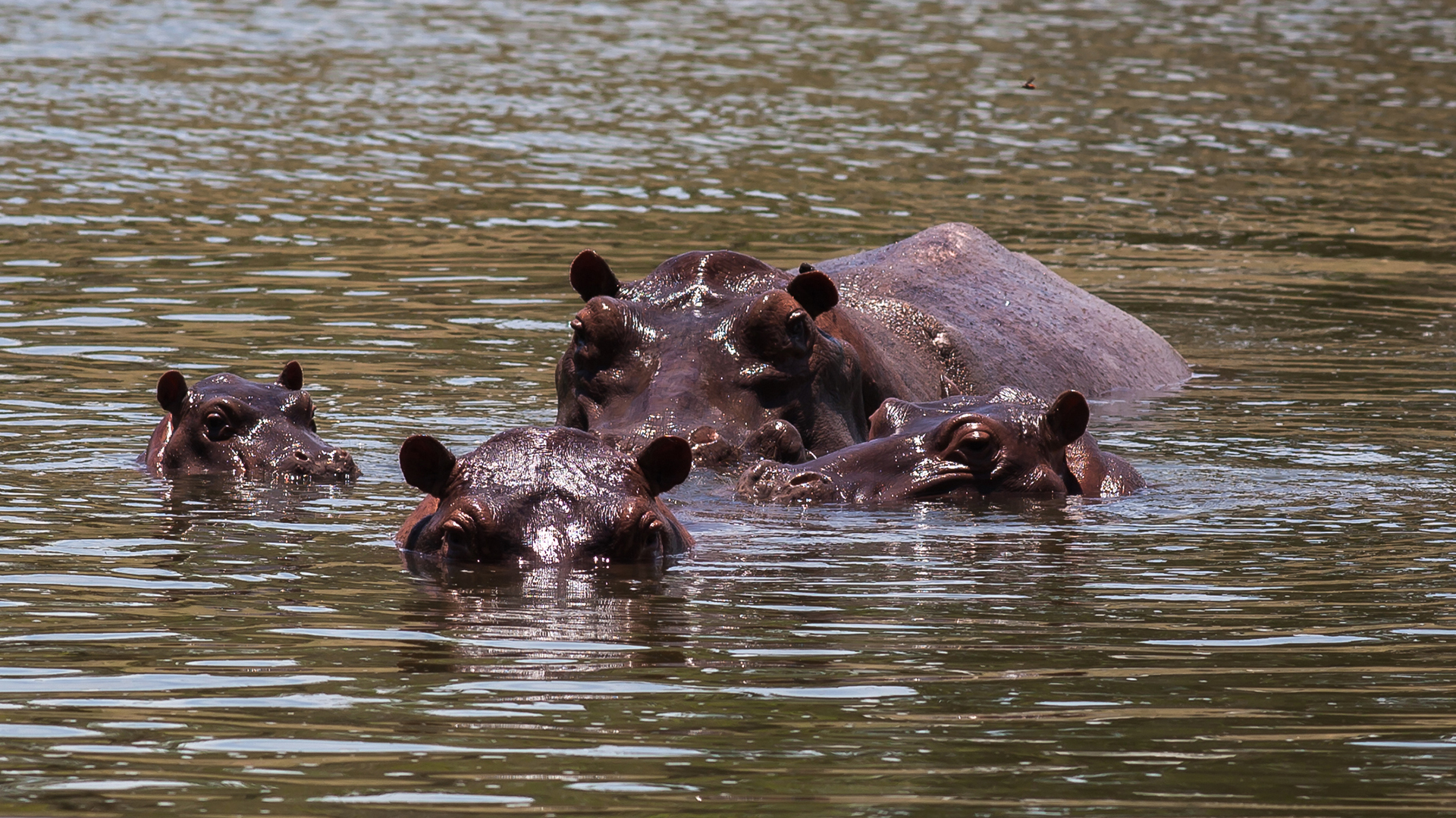About How Much Does a Baby Weigh at 30 Weeks
Facts about hippos

Hippopotamuses (Hippopotamus amphibius) are large, circular, water-loving animals that are native to Africa. The word "hippopotamus" comes from the Greek discussion for "water equus caballus" or "river horse," although hippos and horses aren't closely related. The closest living relatives to hippos are pigs, whales and dolphins, according to the San Diego Zoo.
Size
Mutual hippos, also known as river hippos, are very rotund animals and are the third largest living state mammals, after elephants and white rhinos, according to the African Wild animals Foundation. They grow to between 10.viii and xvi.5 feet (3.3 and 5 meters) long and upwards to 5.2 anxiety (one.6 1000) tall at the shoulder. The boilerplate female weighs effectually three,000 lbs. (i,400 kilograms), while males weigh three,500 to 9,920 lbs. (1,600 to four,500 kg), according to the San Diego Zoo.
These enormous animals are related to the much smaller and rarer pygmy hippo (Choeropsis liberiensis), which but grows to be 2.5 to three.2 feet (0.75 to one m) tall and about 5 to six anxiety (1.5 to i.75 chiliad) long, according to the San Diego Zoo. Pygmy hippos can weigh between 350 and 600 lbs. (160 and 270 kg).
Habitat and behavior
Common hippos live in sub-Saharan Africa. They live in areas with abundant water, as they spend most of their time submerged to go along their skin cool and moist. Considered amphibious animals, hippos spend upwardly to 16 hours per twenty-four hours in the water, according to National Geographic.
Hippos are social beasts, hanging out in groups called schools, bloats, pods or sieges. Schools of hippos usually consist of x to 30 members, including both females and males, although some groups have as many as 200 individuals. No thing the size, the school is ordinarily led past a dominant male, according to the San Diego Zoo.
Hippos are loud animals. Their snorts, grumbles and wheezes have been measured at 115 decibels, co-ordinate to the San Diego Zoo — about the aforementioned book you'd hear when 15 feet (4.6 1000) from the speakers at a rock concert. The animals' signature noise, called the "wheeze honk," can be heard from more than than half a mile (1 kilometer) abroad, Live Scientific discipline previously reported. These booming creatures also utilise subsonic vocalizations to communicate.
Hippos are aggressive and are considered very dangerous. They have large teeth and tusks that they use for fighting off threats, including humans. Sometimes, their immature autumn victim to adult hippos' tempers. During a fight between two adults, a immature hippo defenseless in the middle can be seriously hurt or even crushed, according to PBS.
Though hippos move hands through the water, they can't actually swim. Co-ordinate to the San Diego Zoo, these animals glide through the h2o by pushing themselves off other objects. And they can stay underwater for up to v minutes without coming up for air, according to National Geographic.

Hungry, hungry hippos
Hippos have a healthy and mostly herbivorous ambition. Adults eat about fourscore lbs. (35 kg) of grass each night, traveling up to six miles (10 km) in a night to get their fill. They as well eat fruit that they observe during their nightly scavenging, according to National Geographic. If food is deficient, hippos can shop nutrient in their stomachs and go up to three weeks without eating.
Although hippos were long believed to be exclusively herbivorous, in a 2015 study published in the journal Mammal Review, scientists reported that hippos occasionally feed on the carcasses of animals, including other hippos.
Babe hippos
Female hippos have a gestation flow of eight months and have only 1 baby at a fourth dimension, according to the San Diego Zoo. At nascence, the calf weighs between fifty and 110 lbs. (23 and 50 kg). For its first 8 months, the calf nurses while its mother is on state, or information technology swims underwater to suckle. When it dives, the calf closes its nose and ears to block out water. All hippos accept this ability. Hippos too accept membranes that cover and protect their eyes while they are underwater.
At v to 7 years old, a hippo calf is fully mature, according to the San Diego Zoo. The average life span of a hippo in the wild or in captivity can range from about 40 to 61, co-ordinate to the University of Michigan'southward Animal Diversity Web.
Related: What animal has the longest pregnancy?
Attacks on humans
The hippopotamus is considered the world's deadliest big state mammal. These semiaquatic giants kill an estimated 500 people per year in Africa, according to the BBC. Hippos are highly aggressive and are well-equipped to deliver considerable damage to anything that wanders into their territory.
For instance, in 2014, a hippo attacked a small, unsuspecting boat filled with Nigerian school children, killing 12 students and 1 teacher on board, ABC News reported. Conflicts between humans and hippos also occur when hippos wander onto land in search of food.

Conservation status
According to the International Union for Conservation of Nature (IUCN), the mutual hippo isn't endangered, but information technology is vulnerable to extinction. The IUCN estimates that between 115,000 and 130,000 mutual hippos remain in the wild. Poaching and habitat loss reduced the hippo's global numbers during the late 1990s and early on 2000s, but the population has since plateaued thanks to stricter law enforcement, according to the IUCN.
Invasive hippos

Notorious drug lord Pablo Escobar famously kept hippos, giraffes, elephants and other exotic animals on his estate in northwestern Colombia. When Escobar was killed in 1993, the Colombian regime seized all of his assets, including his menagerie. About of his animals were transferred to zoos and aquariums, only his four hippos were left to fend for themselves. Those four animals fabricated their way into Colombia's waterways, where they multiplied.
An estimated eighty hippos now inhabit the river networks well-nigh Medellín, Colombia, where Escobar's Hacienda Nápoles estate was located, Alive Science reported in October 2021. Wildlife officials in Colombia began sterilizing the hippos in 2021, because this invasive population poses a threat to the community, in that the massive beasts occasionally bruise crops and charge at humans. The hippos also threaten native wildlife populations and their presence degrades the local ecosystem, as each individual hippo gobbles down dozens of pounds of vegetation a night and generates formidable quantities of poop.
All the same, many Colombians have grown fond of the uninvited ungulates and vehemently oppose their removal. Some scientists, though, fear that the animals' connected presence could accept unintended consequences. "The risk to native species — such as manatees, turtles and fish — is high, and the environmental effect is unpredictable," Nelson Aranguren-Riaño, biologist at Pedagogical and Technological University of Colombia, said in a argument.
Additional resources and readings
- Did you know hippos are covered in mucus? Acquire more with SciShow Kids.
- Larn well-nigh the "The 'Dazzler' Regime of Hippos" with BBC Earth.
- Check out the book Saving Fiona: The Story of the World'due south Most Famous Baby Hippo.
Bibliography
AFP. (2014, November xix). Xiii people, including 12 children, killed in Hippopotamus attack. ABC News. Retrieved Feb 4, 2022, from https://www.abc.internet.au/news/2014-11-twenty/hippopotamus-attack-kills-thirteen-in-boat-in-niger/5904646
African Wildlife Foundation. (n.d.). Hippopotamus. African Wild animals Foundation. Retrieved February 4, 2022, from https://world wide web.awf.org/wildlife-conservation/hippopotamus
BBC. (2016, June 15). What are the globe'south deadliest animals? BBC News. Retrieved Feb 4, 2022, from https://www.bbc.com/news/world-36320744
Dudley, J. P., Hang'Ombe, B. K., Leendertz, F. H., Dorward, L. J., Castro, J., Subalusky, A. L., & Clauss, M. (2015). Carnivory in the common hippopotamus Hippopotamus amphibius: implications for the ecology and epidemiology of anthrax in African landscapes. Mammal Review, 46(3), 191–203. https://doi.org/10.1111/mam.12056
IUCN. (north.d.). Hippopotamus. IUCN Blood-red List of Threatened Species. Retrieved February 4, 2022, from http://www.iucnredlist.org/details/10103/0
National Geographic. (n.d.). Hippopotamus: National Geographic. National Geographic. Retrieved February four, 2022, from https://world wide web.nationalgeographic.com/animals/mammals/facts/hippopotamus
Public Broadcasting Service. (2020, July 9). Hippo fact sheet. PBS. Retrieved February xi, 2022, from https://www.pbs.org/wnet/nature/blog/hippo-fact-sail/
San Diego Zoo. (n.d.). Hippo. San Diego Zoo Wildlife Alliance Animals and Plants. Retrieved Feb 4, 2022, from https://animals.sandiegozoo.org/animals/hippo
San Diego Zoo. (n.d.). Pygmy hippopotamus. San Diego Zoo Wild animals Alliance Animals and Plants. Retrieved February 4, 2022, from https://animals.sandiegozoo.org/animals/pygmy-hippopotamus
UC San Diego. (2018, April 26). A drug lord and the world's largest invasive fauna. UC San Diego News Eye. Retrieved February iv, 2022, from https://ucsdnews.ucsd.edu/feature/a-drug-lord-and-the-worlds-largest-invasive-beast
This article was last updated on Feb. fourteen, 2022 by Live Science staff writer Nicoletta Lanese. Alive Science contributor Annie Roth also contributed reporting.
Originally published on Live Science.
flemingpontliatich.blogspot.com
Source: https://www.livescience.com/27339-hippos.html
0 Response to "About How Much Does a Baby Weigh at 30 Weeks"
Post a Comment